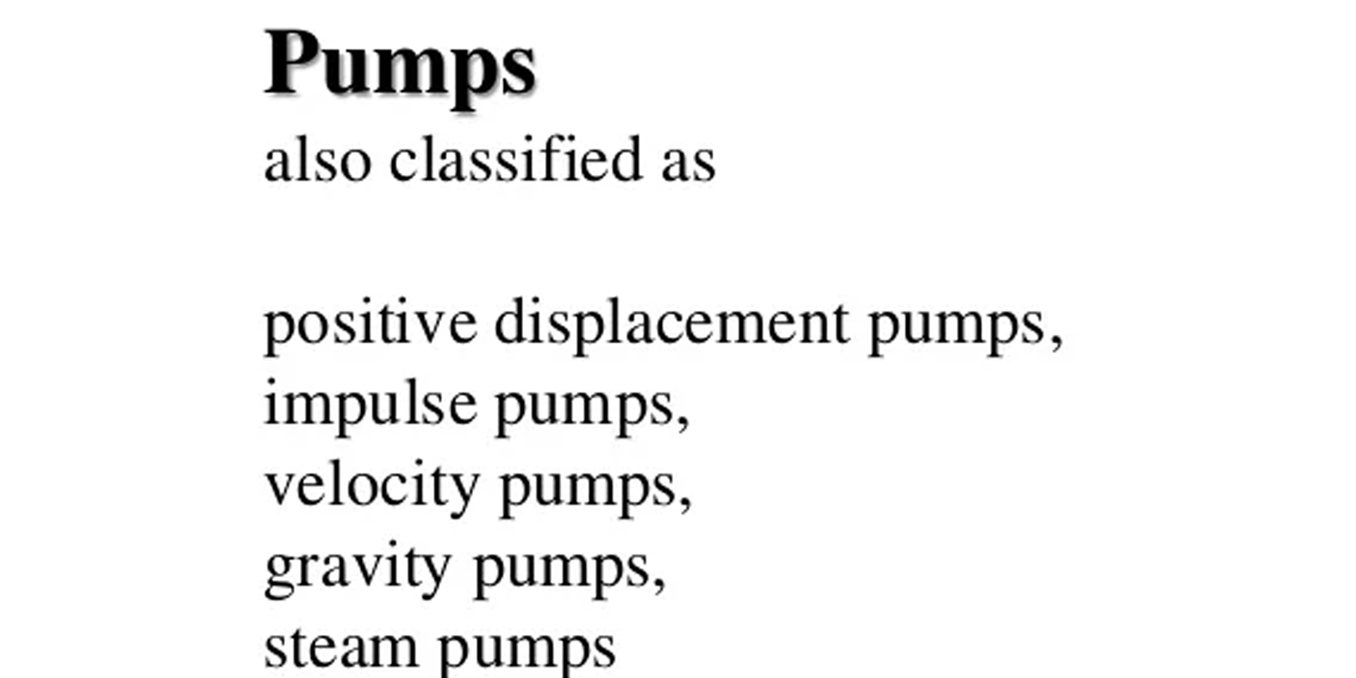An Introduction To The Different Varieties Of Pumps
Pumps can be classified into different categories depending on their method of displacement, such as:
- Positive Displacement Pump
A positive displacement pump moves a fluid by enclosing a fixed amount and displacing the trapped volume into a discharge pipe. Some positive displacement pumps use a cavity that increases in volume on the suction side and a cavity that decreases on the discharge side. Liquid flows into the pump as the cavity on the suction side expands and the liquid flows out of the discharge site as the cavity collapses. The volume remains constant throughout each cycle of operation.
Positive displacement pumps, unlike centrifugal or roto-dynamic pumps, can produce a constant flow rate, regardless of the discharge pressure. A slight increase in internal leakage as there is an increase in pressure however prevents this flow rate from being perfectly constant.
A positive displacement pump cannot operate correctly when there is a closed valve on the outlet side of the pump, because there is no shutoff head like there is on centrifugal pumps. A positive displacement pump working against a closed discharge valve would continue to produce flow and the pressure in the discharge line would increase until the line bursts or the pump breaks.
On the outlet side of the positive displacement pump, a safety valve is necessary and is used as a safety precaution. Safety is increased by an external relief valve in the discharge line, with a return line back to the suction line or supply tank.
- Impulse Pump
Impulse pumps use pressure created by the compression of a gas. In some impulse pumps the gas trapped in the liquid is released and stored somewhere in the pump, creating a pressure that can push part of the liquid upwards. Impulse pumps used include Hydraulic ram pumps (An acyclic water pump powered by hydropower, kinetic energy of a low-head water supply is stored temporarily in an air-bubble hydraulic accumulator, then used to drive water to a higher head.), pulser pumps (run with natural kinetic energy) and airlift pumps (run on air inserted into pipe, pushing up the water, when bubbles move upward, or on pressure inside the pipe pushing water upwards).
- Velocity Pump
Velocity pumps use kinetic energy added to the fluid in order to increase the flow velocity. Energy is added to a velocity pump continuously, and this energy is converted into kinetic energy in order to increase velocity and therefore causing an increase in pressure, or potential energy, inside the pump.
This increase of energy happens when the velocity is reduced prior to, or during, the product leaving from the pump to the outlet pipe. A practical difference between velocity and positive displacement pumps is how they operate under closed valve conditions.
Positive displacement pumps physically displace fluid, so closing a valve downstream of a positive displacement pump produces a continual pressure build up that can cause mechanical failure of pipeline or pump.
Dynamic pumps differ in that they can be safely operated under closed valve conditions (for short periods of time).
- Gravity Pump
Gravity pumps include the syphon (Used to refer to a wide variety of devices that involve the flow of liquids through tubes. More specifically, it refers to a tube in an inverted ‘U’ shape, causing a liquid to flow uphill and above the surface of a reservoir, without a pump.
It is powered by the fall of the liquid as it flows down the tube under the pull of gravity, and is discharged at a level lower than the surface of the reservoir from which it came.) and Heron’s fountain (A hydraulic machine invented by the 1st century AD inventor, mathematician, and physicist Heron, also known as Hero of Alexandria.). The hydraulic ram is also sometimes called a gravity pump.
- Steam Pump
Steam pumps include any type of pump powered by a steam engine and also pistonless pumps such as Thomas Savery’s or the Pulsometer steam pump.
Recently there has been new interest in low power solar steam pumps for use in smallholder irrigation in developing countries.
Modern engineering materials coupled with new alternative engine configurations has meant that these types of system are now becoming more cost effective.







